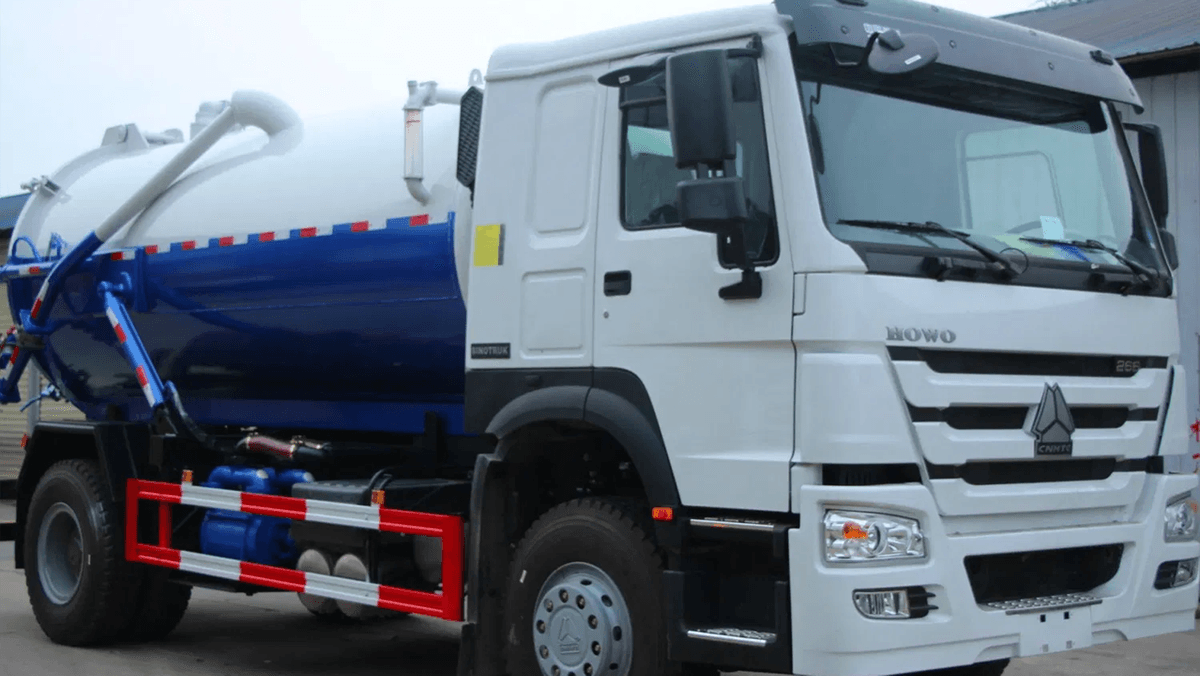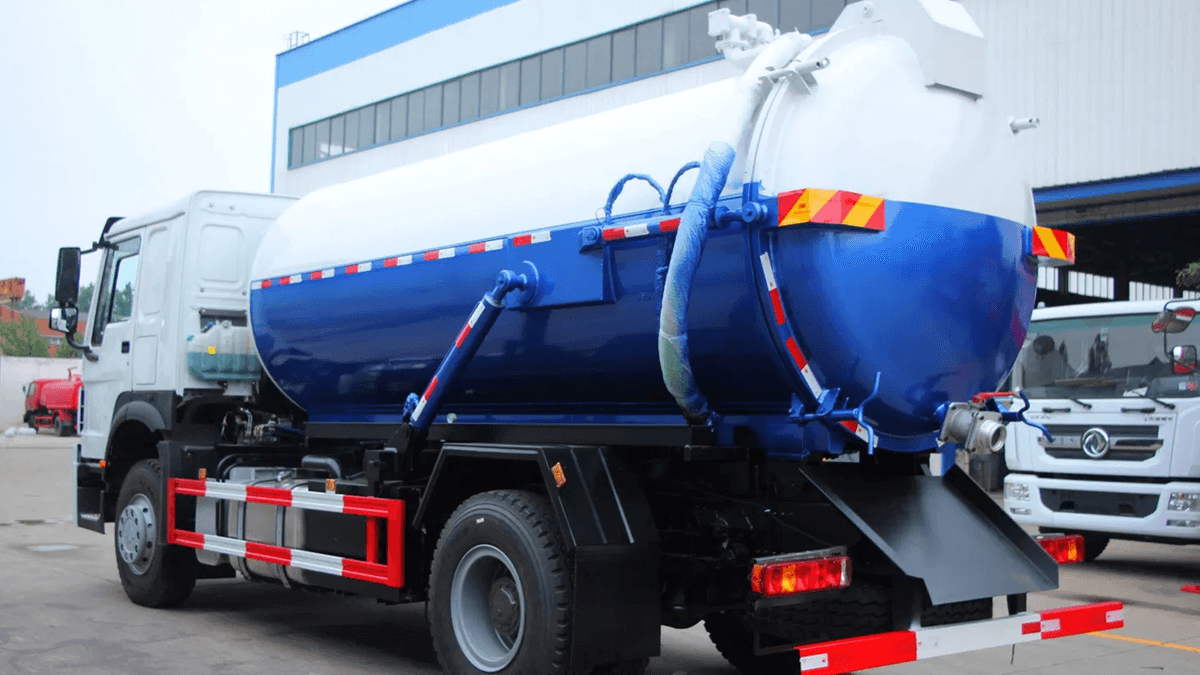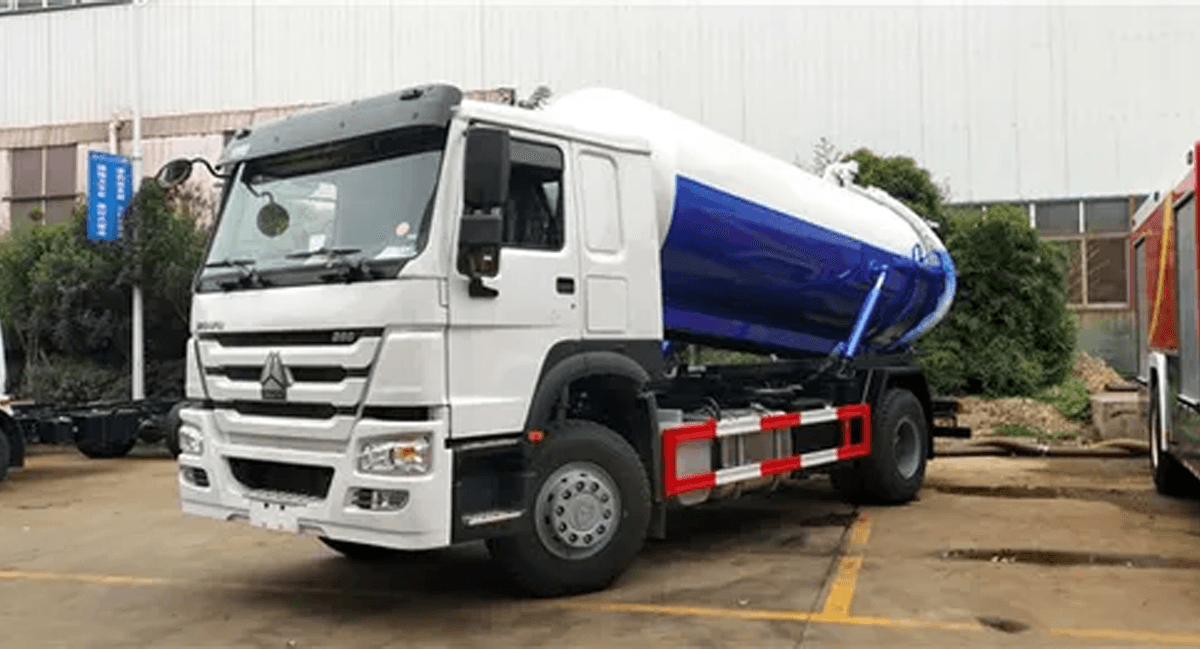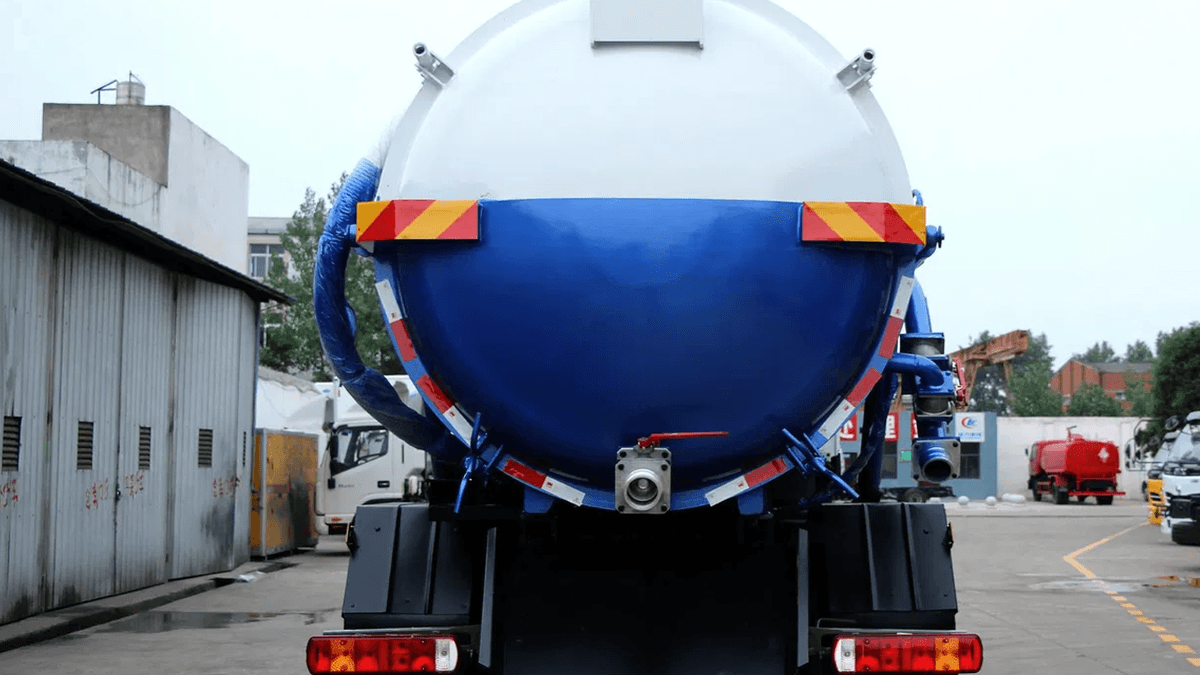Howo Sewage Truck is a game-changer in airport waste management, combining rugged durability with cutting-edge efficiency to tackle the unique challenges of handling sewage and liquid waste in aviation hubs. In busy airports, where thousands of passengers, staff, and aircraft generate massive amounts of waste daily, a reliable sewage disposal system is non-negotiable—and Howo Sewage Truck stands out as the ultimate solution, built to thrive in the demanding conditions of airport premises. This comprehensive guide will explore why Howo Sewage Truck is the top choice for airports worldwide, delving into its durable design, high-efficiency processing capabilities, compliance with strict regulations, and real-world success stories. Whether you manage a small regional airport or a bustling international hub, understanding how Howo Sewage Truck transforms waste management operations will show you why it’s an investment that pays off in reliability, cost savings, and operational excellence.
The Critical Role of Sewage Management in Airport Premises
Airports are microcosms of activity, with terminals, runways, maintenance facilities, and catering services generating a constant stream of liquid waste—from passenger restrooms and staff facilities to aircraft greywater and deicing runoff. Effective sewage management in airport premises is not just a matter of cleanliness; it’s critical for public health, regulatory compliance, and the smooth operation of flights. Let’s break down why robust sewage disposal systems, like Howo Sewage Truck, are indispensable.

Types of Liquid Waste in Airports: A Challenge for Any Sewage System
Airport waste is far more diverse and demanding than residential or commercial sewage, requiring specialized handling that only a durable, purpose-built truck like Howo Sewage Truck can provide:
- Domestic Sewage: From terminal restrooms, lounges, and staff break rooms, this includes human waste and wastewater from sinks, showers, and handwash stations. It’s high in organic matter and requires efficient extraction to prevent backups and odors.
- Aircraft Waste: Planes generate two key types of liquid waste: blackwater (sewage from onboard toilets) and greywater (from sinks, galleys, and cabin cleaning). Aircraft waste is stored in holding tanks and must be pumped out quickly between flights to avoid delays—often in tight turnaround windows of 30–45 minutes.
- Deicing Runoff: In cold climates, airports use large volumes of deicing fluids (like propylene glycol) to keep runways and aircraft safe. This runoff is toxic to aquatic life and must be collected separately to comply with environmental regulations, requiring a sewage truck with specialized storage and handling capabilities.
- Maintenance Wastewater: Aircraft maintenance facilities produce wastewater contaminated with oils, lubricants, and cleaning chemicals. This hazardous waste needs secure containment to prevent soil or water pollution.
Each of these waste types demands a sewage truck that can handle varying volumes, viscosities, and contaminants—making Howo Sewage Truck, with its customizable design and durable components, the ideal choice.
Risks of Inadequate Sewage Management in Airports
Failing to manage sewage effectively in airport premises can have severe consequences, underscoring the need for a reliable solution like Howo Sewage Truck:
- Health Hazards: Stagnant sewage or leaks can spread bacteria (e.g., E. coli), viruses, and parasites, putting passengers, staff, and maintenance crews at risk of illness. In crowded terminals, a single contamination incident can lead to outbreaks and reputational damage.
- Regulatory Penalties: Airports are subject to strict environmental laws (e.g., the U.S. Clean Water Act, EU Water Framework Directive) that mandate proper waste disposal. Non-compliance can result in fines exceeding $100,000 per violation, operational shutdowns, or loss of operating licenses.
- Flight Delays: If aircraft waste isn’t pumped out promptly, planes can’t depart on schedule. A single delayed flight due to sewage issues can disrupt connecting flights worldwide, costing airlines and airports millions in compensation and operational losses.
- Environmental Damage: Leaked sewage or untreated deicing runoff can seep into soil, groundwater, or nearby waterways, harming ecosystems and triggering costly cleanup efforts.
These risks make investing in a durable, efficient sewage truck like Howo Sewage Truck not just a choice, but a necessity for any airport prioritizing safety, compliance, and efficiency.

Why Howo Sewage Truck Stands Out for Airport Premises
In a market flooded with sewage trucks, Howo Sewage Truck distinguishes itself through a combination of durability, efficiency, and customization—specifically engineered to meet the rigorous demands of airport premises. Let’s explore the features that make Howo Sewage Truck the preferred choice for aviation hubs worldwide.
Unmatched Durability: Built to Withstand Airport Conditions
Airport premises are harsh environments for vehicles: constant use, exposure to chemicals (from deicing fluids and cleaning agents), extreme temperatures (from scorching tarmacs to freezing winters), and rough surfaces (cracked pavements, gravel maintenance areas). Howo Sewage Truck is designed to thrive here, with:
- Reinforced Chassis: The frame is constructed from high-strength low-alloy (HSLA) steel, capable of supporting heavy loads (up to 20 tons) without bending or fatigue—even after years of daily use. This ensures Howo Sewage Truck can handle full tanks of waste without compromising structural integrity.
- Corrosion-Resistant Tanks: The sewage tank is made from 304-grade stainless steel, which resists rust and chemical damage from deicing fluids, oils, and cleaning agents. Unlike mild steel tanks (which can corrode within 3–5 years), Howo’s stainless steel tanks have a lifespan of 10–15 years, reducing replacement costs.
- Heavy-Duty Pumps: Howo Sewage Truck is equipped with robust vacuum pumps (5,000–8,000 liters per minute capacity) made from hardened cast iron, designed to withstand clogs from debris (e.g., wet wipes, small objects) often found in airport sewage. The pumps require minimal maintenance, even with daily use.
- Weatherproof Components: All electrical systems, hoses, and valves are sealed to resist water, dust, and extreme temperatures (operating range: -30°C to 50°C). This ensures Howo Sewage Truck works reliably in snowstorms, desert heat, or monsoon rains—critical for airports in diverse climates.
High Efficiency: Speeding Up Waste Removal in Time-Sensitive Airports
Airports operate on tight schedules, and sewage trucks must keep pace. Howo Sewage Truck is engineered for speed and productivity, ensuring waste is removed quickly to avoid bottlenecks:
- Rapid Pumping Rates: With a vacuum pump that can empty an aircraft’s 500-liter blackwater tank in under 2 minutes, Howo Sewage Truck cuts down on aircraft turnaround times. For terminal sewage, it can extract up to 15,000 liters per hour—enough to service a busy terminal restroom block in peak hours.
- Large Tank Capacity: Howo Sewage Truck offers tank sizes from 8,000 to 20,000 liters, reducing the number of trips to disposal sites. A 20,000-liter tank can service 40+ aircraft or an entire terminal’s daily sewage needs in one trip, saving time and fuel.
- Ergonomic Design: The truck’s hose reels (extendable up to 15 meters) and remote-controlled pumps allow a single operator to connect and disconnect from aircraft or terminal outlets quickly, eliminating the need for a large crew. This reduces labor costs and speeds up operations.
- Fuel Efficiency: Howo’s advanced engine (Euro V/VI compliant) delivers 8–10 mpg, even with a full load—20% more efficient than comparable sewage trucks. For airports with daily sewage runs, this translates to thousands of dollars in annual fuel savings.

Customization: Tailored to Airport-Specific Needs
No two airports have identical waste management needs, and Howo Sewage Truck offers extensive customization to fit unique requirements:
- Tank Configuration: Choose between single-compartment tanks (for general sewage) or dual-compartment tanks (to separate aircraft blackwater from greywater or deicing runoff), ensuring compliance with waste segregation regulations.
- Additional Equipment: Add-ons like pressure washers (to clean aircraft waste outlets), odor-neutralizing systems (to keep terminals smelling fresh), and GPS tracking (to monitor routes and optimize schedules) make Howo Sewage Truck a versatile solution.
- Accessibility Features: For airports with low-clearance areas (e.g., under aircraft wings), Howo offers low-profile tank designs. For remote maintenance facilities, 4x4 drive options ensure the truck can navigate unpaved terrain.
This flexibility ensures Howo Sewage Truck integrates seamlessly into any airport’s existing waste management workflow, whether serving a small regional hub or a major international gateway.
Compliance and Safety: Howo Sewage Truck Meets Airport Standards
Airports face some of the strictest environmental and safety regulations in the world, and any sewage truck operating on airport premises must meet or exceed these standards. Howo Sewage Truck is engineered with compliance in mind, ensuring airports avoid penalties and maintain their reputations.
Meeting Global Environmental Regulations
From the EU to the U.S. to Asia, environmental agencies mandate strict handling of airport waste, and Howo Sewage Truck is designed to comply:
- EPA and EU Emission Standards: Howo’s engines meet Euro VI and EPA Tier 4 standards, reducing nitrogen oxide (NOx) and particulate emissions by 90% compared to older models. This helps airports meet carbon neutrality goals and avoid emissions-related fines.
- Waste Containment: The truck’s tank features double-walled construction with leak-detection sensors, preventing spills of hazardous waste (like deicing fluids). If a leak is detected, the system automatically shuts down the pump and alerts the operator—critical for avoiding soil or water contamination.
- Disposal Tracking: Howo Sewage Truck can be equipped with digital loggers that record waste type, volume, collection time, and disposal location. This data is essential for regulatory reporting, proving that waste is being treated at licensed facilities (as required by laws like the EU’s Waste Framework Directive).
Safety Features for Airport Operations
Airport premises are high-risk environments, with heavy foot traffic, aircraft movement, and fuel storage areas. Howo Sewage Truck includes safety features to protect operators, passengers, and assets:
- 360-Degree Cameras and Sensors: These provide real-time visibility around the truck, preventing collisions with aircraft, vehicles, or pedestrians—especially critical when maneuvering near terminals or on busy tarmacs.
- Emergency Stop Systems: A manual override allows operators to shut down the pump and engine instantly in case of a hazard (e.g., a fuel leak nearby or a pedestrian in the work area).
- Non-Sparking Components: All metal parts in contact with waste are made from non-sparking materials (e.g., brass), reducing the risk of igniting flammable vapors (a concern when working near aircraft fuel).
- Operator Safety: The cab is reinforced with roll bars, and the operator’s seat includes a harness to protect against tipping. The hose handles are insulated to prevent chemical burns when handling contaminated waste.
By prioritizing compliance and safety, Howo Sewage Truck helps airports maintain their licenses, protect their communities, and avoid costly accidents.
Cost Savings with Howo Sewage Truck: Long-Term Value for Airports
Investing in a durable sewage truck like Howo may seem like a significant upfront expense, but the long-term cost savings—from reduced maintenance to fewer delays—make it a financially smart choice for airport premises. Let’s break down the financial benefits.
Lower Maintenance Costs
Howo Sewage Truck’s durable design means fewer breakdowns and repairs, translating to lower operational costs:
- Extended Lifespan: With proper maintenance, Howo Sewage Truck lasts 10–15 years, compared to 5–7 years for cheaper, less durable trucks. This halves the frequency of replacement, saving airports $50,000–$100,000 in capital expenses over a 15-year period.
- Reduced Repair Bills: The truck’s stainless steel tank, heavy-duty pump, and corrosion-resistant components require minimal repairs. A study of airport fleets found that Howo Sewage Truck needed 60% fewer repairs than competitor models, saving an average of $8,000–$12,000 annually in parts and labor.
- Minimal Downtime: When a sewage truck is out of service, airports often have to rent replacement vehicles at $500–$1,000 per day. Howo’s reliability reduces downtime to less than 2 days per year (compared to 10+ days for other trucks), saving $4,000–$10,000 annually in rental costs.

Fuel and Labor Efficiency
Howo Sewage Truck’s design also cuts ongoing operational costs:
- Fuel Savings: As mentioned, Howo’s efficient engine delivers 20% better fuel economy. For an airport with a truck that travels 50 miles daily, this saves approximately 500 gallons of fuel per year—valued at $2,000–$3,000 (based on $4–$6 per gallon).
- Reduced Labor Needs: The truck’s ergonomic design and remote-controlled operations allow one operator to handle tasks that would require two people with less advanced trucks. This reduces labor costs by $30,000–$50,000 annually (based on a $25/hour wage for a second crew member).
Avoiding Penalties and Delays
The cost of non-compliance or inefficiency far outweighs the investment in Howo Sewage Truck:
- Regulatory Fines: A single violation of environmental laws can cost $100,000 or more. Howo’s compliance features help airports avoid these penalties entirely.
- Flight Delay Costs: A 30-minute delay for a single commercial flight costs airlines an average of $10,000. Howo’s rapid pumping ensures aircraft waste is removed on time, preventing such delays. For a busy airport with 100+ daily flights, this could save $1 million+ annually.
When you add up these savings, Howo Sewage Truck typically pays for itself within 2–3 years, delivering ongoing value for the life of the vehicle.
Real-World Success: Airports Thriving with Howo Sewage Truck
Airports around the world have already upgraded to Howo Sewage Truck, and their experiences highlight the transformative impact on waste management operations. Here are some standout case studies:
Case Study 1: Frankfurt Airport (Germany)
Frankfurt Airport, one of Europe’s busiest hubs, was struggling with frequent breakdowns of its aging sewage truck fleet, leading to flight delays and high repair costs. In 2021, they replaced 10 trucks with Howo Sewage Truck models customized for dual-compartment storage (to separate aircraft waste and deicing runoff).
- Results:
- Breakdowns dropped by 80%, reducing downtime from 12 days/year to 2 days/year.
- Aircraft turnaround times for waste removal improved by 40% (from 15 minutes to 9 minutes), eliminating delays.
- Annual maintenance costs fell by €60,000, and fuel savings added another €15,000 in annual savings.
“Our Howo trucks have been a revelation,” says Klaus Mueller, Frankfurt’s Waste Management Director. “They handle our toughest waste challenges with ease, and the reliability means we can focus on keeping the airport running, not fixing trucks.”
Case Study 2: Dubai International Airport (UAE)
Dubai International, known for extreme heat (up to 50°C) and high passenger volumes, needed a sewage truck that could withstand desert conditions. They invested in 8 Howo Sewage Trucks with corrosion-resistant tanks and weatherproof systems in 2022.
- Results:
- The trucks operated reliably through summer heatwaves, with no heat-related breakdowns (unlike their previous fleet, which often failed in temperatures above 45°C).
- Odor-neutralizing systems reduced complaints from passengers near waste collection areas by 90%.
- Fuel efficiency improvements saved AED 40,000 (≈$10,900) per truck annually.

“Howo Sewage Truck was the only vehicle that could handle our climate and volume,” notes Aisha Al-Zaabi, Dubai’s Environmental Operations Manager. “They’ve made our waste management operations almost invisible to passengers—exactly what we need.”
Case Study 3: Toronto Pearson International Airport (Canada)
Toronto Pearson faces harsh winters, with deicing runoff management a critical regulatory requirement. In 2020, they added 5 Howo Sewage Trucks with insulated tanks and 4x4 capabilities to their fleet.
- Results:
- The trucks collected 15% more deicing runoff than previous models, ensuring full compliance with Ontario’s environmental regulations.
- 4x4 capabilities allowed access to remote deicing pads, reducing the need for secondary pumping.
- Over three winters, maintenance costs were 50% lower than with their old trucks, saving CAD 75,000.
“The Howo trucks are workhorses in the snow,” says Brian Thompson, Toronto Pearson’s Winter Operations Lead. “They keep us compliant, even on the coldest days, and that peace of mind is invaluable.”
Case Study 4: Sydney Kingsford Smith Airport (Australia)
Sydney Airport needed a solution for its growing domestic terminal, where sewage backups in peak hours were causing passenger disruptions. They added 3 Howo Sewage Trucks with 20,000-liter tanks in 2023.
- Results:
- Terminal sewage removal capacity increased by 60%, eliminating backups even during holiday peaks.
- The single-operator design reduced labor costs by AUD 35,000 annually.
- GPS tracking optimized routes, cutting fuel use by 18%.
“Howo Sewage Truck has transformed our terminal operations,” says Maria Santos, Sydney’s Facilities Manager. “We no longer worry about sewage issues disrupting passenger experiences—these trucks handle it all.”
How to Choose the Right Howo Sewage Truck for Your Airport
Selecting the perfect Howo Sewage Truck for your airport premises depends on your specific needs, from waste types to operational volumes. Follow this step-by-step guide to ensure you choose the right model.
Step 1: Assess Your Airport’s Waste Profile
Start by analyzing the types and volumes of liquid waste your airport generates:
- Waste Types: Do you need to handle primarily domestic sewage, aircraft blackwater/greywater, deicing runoff, or a mix? This will determine if you need a single-compartment or dual-compartment tank.
- Daily Volume: Calculate total daily waste (e.g., 50,000 liters for a large international airport vs. 10,000 liters for a regional hub). This dictates tank size—Howo offers 8,000L to 20,000L options.
- Collection Points: Identify locations (terminals, aircraft gates, maintenance areas) and their accessibility (e.g., low-clearance under aircraft, remote unpaved sites). This may require 4x4 drive or low-profile designs.
Step 2: Prioritize Key Features Based on Your Needs
Once you know your waste profile, select features that address your biggest challenges:
- For Cold Climates: Opt for insulated tanks, engine block heaters, and snow tires to handle freezing temperatures and deicing runoff.
- For High-Volume Hubs: Choose large tanks (15,000L+) and high-capacity pumps (8,000 liters/minute) to keep up with aircraft turnarounds.
- For Environmental Compliance: Add dual-compartment tanks, leak detectors, and digital logging systems to meet waste segregation and reporting requirements.
- For Labor Efficiency: Include remote-controlled pumps and hose reels to reduce crew size and speed up operations.
Step 3: Work with Howo’s Expert Team for Customization

Howo’s team of engineers specializes in tailoring sewage trucks to airport needs. Share your waste assessment and feature priorities, and they’ll design a truck that fits:
- On-Site Consultation: Howo’s representatives can visit your airport to assess collection points, waste flows, and infrastructure, ensuring the truck integrates seamlessly.
- Prototype Testing: For unique requirements (e.g., specialized deicing runoff handling), Howo can build a prototype for testing before full production.
- Training Plans: Along with the truck, Howo provides operator training to ensure your team maximizes efficiency and safety.
Step 4: Evaluate Total Cost of Ownership
When comparing quotes, look beyond the upfront price to total cost of ownership (TCO), which includes:
- Purchase Price: Howo Sewage Truck may have a higher initial cost than budget models, but its durability and efficiency lower TCO over time.
- Maintenance Costs: Factor in projected repair bills, replacement parts, and downtime (Howo’s TCO is typically 30% lower than competitors over 10 years).
- Fuel and Labor Savings: Use the estimates in our cost savings section to calculate long-term savings from efficiency features.
Step 5: Secure After-Sales Support
Howo stands behind its products with comprehensive after-sales support, critical for minimizing downtime:
- Warranty: All Howo Sewage Trucks come with a 3-year/100,000-mile warranty covering parts and labor.
- Global Service Network: With service centers in 50+ countries, Howo can dispatch technicians to your airport for repairs or maintenance within 24–48 hours.
- Genuine Parts Supply: Howo maintains a global inventory of parts, ensuring quick delivery for replacements.
Why Now Is the Time to Invest in Howo Sewage Truck
Airports worldwide are facing increasing pressure to improve efficiency, reduce costs, and meet stricter environmental regulations—all while handling growing passenger volumes. Howo Sewage Truck addresses all these challenges, making now the perfect time to upgrade your waste management fleet.
- Regulatory Changes: Governments are tightening environmental laws for airports, with higher fines for non-compliance. Howo Sewage Truck’s compliance features future-proof your operations against new regulations.
- Growing Passenger Numbers: Global air travel is projected to reach 10 billion passengers annually by 2040, increasing waste volumes. Howo’s high-capacity trucks ensure you can scale operations without bottlenecks.
- Cost Pressures: Airlines and airports are under pressure to reduce expenses. Howo Sewage Truck’s long-term savings on maintenance, fuel, and labor directly boost your bottom line.
- Reputation Management: Passengers and communities expect airports to operate sustainably and safely. A reliable sewage system with Howo Sewage Truck enhances your reputation as a responsible, efficient hub.
Conclusion: Howo Sewage Truck—The Foundation of Efficient Airport Waste Management
Howo Sewage Truck is more than a vehicle; it’s a critical component of successful airport operations, ensuring that liquid waste is handled safely, efficiently, and in compliance with regulations. Its durable design, customizable features, and proven track record in airports worldwide make it the smart choice for any aviation hub looking to upgrade its waste management system.
From reducing flight delays and maintenance costs to avoiding regulatory penalties and protecting public health, Howo Sewage Truck delivers value at every turn. The real-world success stories from airports like Frankfurt, Dubai, and Toronto prove that it’s not just an investment in a truck, but an investment in the smooth, sustainable operation of your airport.
If you’re ready to transform your sewage management operations, contact Howo today to discuss your needs. Their team will work with you to design a truck that fits your airport’s unique challenges, ensuring you enjoy the durability, efficiency, and cost savings that thousands of airports already trust.
Don’t let outdated sewage trucks hold back your airport’s performance. Choose Howo Sewage Truck, and experience the difference a truly reliable, efficient waste management solution can make.
Howo Sewage Truck, airport sewage management, durable sewage trucks, airport liquid waste, Howo heavy-duty trucks, aircraft waste disposal, deicing runoff management, airport waste compliance, sewage truck efficiency, Howo customization, airport maintenance, waste management cost savings, Howo warranty, global sewage truck service, airport operations, sewage truck safety features, Howo success stories, airport environmental regulations, high-capacity sewage trucks, airport waste handling.
Howo Sewage Truck is the backbone of modern airport waste management, combining strength, efficiency, and intelligence to meet the unique demands of aviation hubs. As airports grow and regulations tighten, investing in a Howo Sewage Truck isn’t just a choice—it’s a necessity for staying ahead in a fast-paced, high-stakes industry. Choose Howo, and keep your airport clean, compliant, and efficient for years to come.

